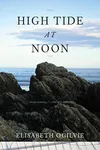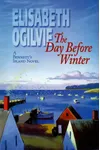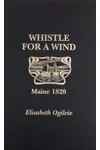Picture a storyteller who spun tales of stormy seas and tight-knit island communities—meet Elisabeth Ogilvie! Born in Boston in 1917, this American novelist captured the rugged charm of Maine’s coast in her beloved novels, drawing from her childhood summers on Criehaven Island. With a knack for vivid settings and heartfelt characters, Ogilvie’s work, especially her Tide Trilogy, remains a love letter to coastal life.
Elisabeth Ogilvie didn’t just write about Maine—she lived it. Her stories of lobstering families and windswept islands resonate with readers who crave authentic, immersive tales. Let’s dive into her life, works, and lasting legacy!
The Making of Elisabeth Ogilvie
Elisabeth May Ogilvie was born on May 20, 1917, in Boston to Frank and Maude Ogilvie, with three older brothers. Raised in Dorchester and Wollaston, Massachusetts, she spent summers on Criehaven, a remote Maine island that shaped her imagination. After graduating from North Quincy High School in 1934, college wasn’t an option during the Great Depression. Instead, she honed her craft through a writing course at Harvard, where her talent shone. Her first story appeared in a Massachusetts newspaper, launching a prolific career.
Elisabeth Ogilvie’s Unforgettable Stories
Ogilvie’s novels are a tapestry of Maine’s coastal life, blending romance, mystery, and the resilience of island communities. Her most famous work, the Tide Trilogy, begins with High Tide at Noon (1944), following young Joanna Bennett’s dream of captaining a lobster boat in a male-dominated world. Storm Tide and The Ebbing Tide continue the saga, exploring family, love, and survival. Fans adore her rich descriptions of stormy skies and lobster traps, rooted in her Criehaven summers.
Beyond Maine, Ogilvie’s Jennie Trilogy, starting with Jennie About to Be (1984), traces a young woman’s journey from Scotland’s Highland Clearances to Maine’s shores, showcasing her versatility. She also penned young adult novels and mysteries like The Witch Door (1959), weaving suspense with coastal charm. Her 46 books, including 14 for young adults, reflect a warm, character-driven style that celebrates community and perseverance.
Ogilvie’s settings feel alive, from crashing waves to creaking docks, making readers feel the sea spray. Her ability to craft strong, relatable women like Joanna Bennett set her apart in mid-20th-century fiction, appealing to readers seeking stories of grit and heart.
Why Elisabeth Ogilvie Matters
Elisabeth Ogilvie’s work immortalizes Maine’s coastal culture, preserving the rhythms of lobstering life for generations. Her Bennett’s Island series, inspired by Criehaven, offers a window into a vanishing world of self-reliant islanders. Fans, including those who published newsletters celebrating her work, cherished her authentic voice. Living on Gay Island for over 50 years, Ogilvie embodied the life she wrote about, earning comparisons to fictional sleuth Jessica Fletcher for her island-based storytelling.
Her legacy endures through readers who find solace in her tales of resilience and community. Ogilvie’s novels remind us that even in stormy times, human connections and courage prevail, making her a quiet giant in regional fiction.
- Born: May 20, 1917, in Boston, Massachusetts
- Key Works: Tide Trilogy, Jennie Trilogy, My World Is an Island (autobiography)
- Died: September 9, 2006, in Cushing, Maine
- Notable: Lived on Gay Island, Maine, for over 50 years
About Elisabeth Ogilvie
Ready to sail into Elisabeth Ogilvie’s world? Grab High Tide at Noon and lose yourself in her captivating Maine tales!














































